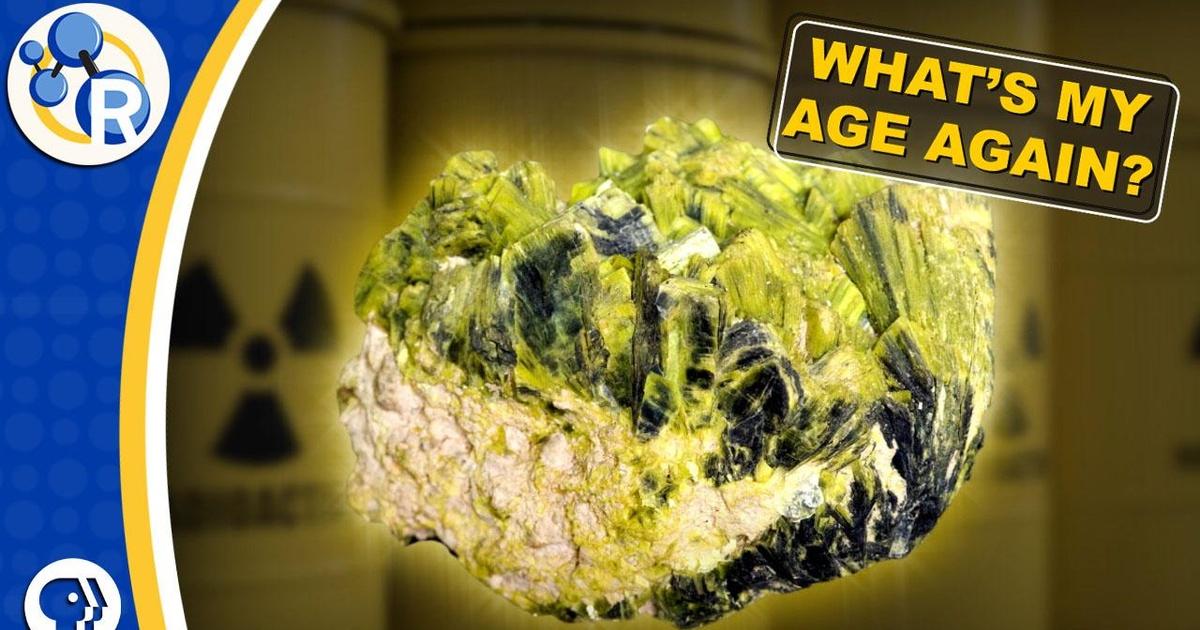
- Select a language for the TTS:
- UK English Female
- UK English Male
- US English Female
- US English Male
- Australian Female
- Australian Male
- Language selected: (auto detect) - EN
Play all audios:
You had questions; We have answers. Mike Meyer asks, "How do we know the half life of uranium well enough to use it accurately for measuring long periods of time?" Good question.
You can't just stand over a sample of uranium oxide with a stopwatch because you'd die about this far into its half life. So basically what scientists do is, instead of measuring
the disappearance of the thing itself -- they measure something else that's mathematically related to its disappearance. When U-238 decays, it turns into Thorium. That thorium then
decays into a whole bunch of other stuff, but the important thing is that when Uranium decays it releases an alpha particle, aka a helium nucleus. You can measure the release of those alpha
particles in the lab, crunch the numbers. If you had a 1000 g sample of uranium-238, you would measure that it releases about 13 million alpha particles per second. Plug those numbers into
this equation here and there you go: the half life is about 4.5 billion years. You're not done though. You've got to check this number against other radioactive dating measurements
of the age of a really old rock say a meteorite. Why? Because we're not playing around when it comes to the age of the earth. A couple of people including Nizar al Sibai watched us
dissolve gold in our video about acids and wanted to know--can you get it BACK? Yup! There are two main ways to retrieve gold once it's been dissolved: electroplating and precipitation.
The simplest-in-theory way to retrieve gold from aqua regia was pointed out by TheResidentSkeptic on our older video about George de Hevesy, who dissolved a Nobel prize in acid to hide it
from the Nazis. Sometimes you mix two dissolved chemicals together and a solid comes crashing out. Here we made solid silver chloride by mixing solutions of copper chloride and silver
nitrate. We call that a precipitation reaction--no, not the rain kind. When we dissolved the gold in aqua regia, it reacted to become chloroauric acid. Add sodium and solid gold precipitates
right out...like so... at least on paper. In real life it might take a bit of patience. And a few tries. It's kinda tricky, which brings us to the way people actually use:
electroplating. Electroplating is basically when you use electricity to coat one metal in a different metal. Here's how it works. We set up a beaker with our gold solution and two
pieces of metal, connected with some wire and a battery. As you can guess, this electrode becomes positively charged and this one becomes negatively charged. Since the gold ions in solution
are positively charged, they are attracted to the negative electrode. They move over there and get electrons from the negative electrode in a redox reaction. That's how the positively
charged gold ions become neutral gold metal atoms. So we get solid gold building up at that electrode that we can then go back and collect and give to Smaug. By the way This is how a current
United States penny is made -- coating cheap zinc with a thin layer of copper -- but you can electroplate with almost any metal too.




